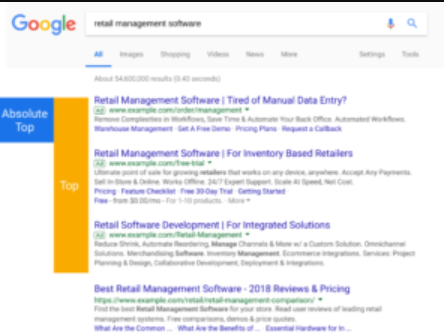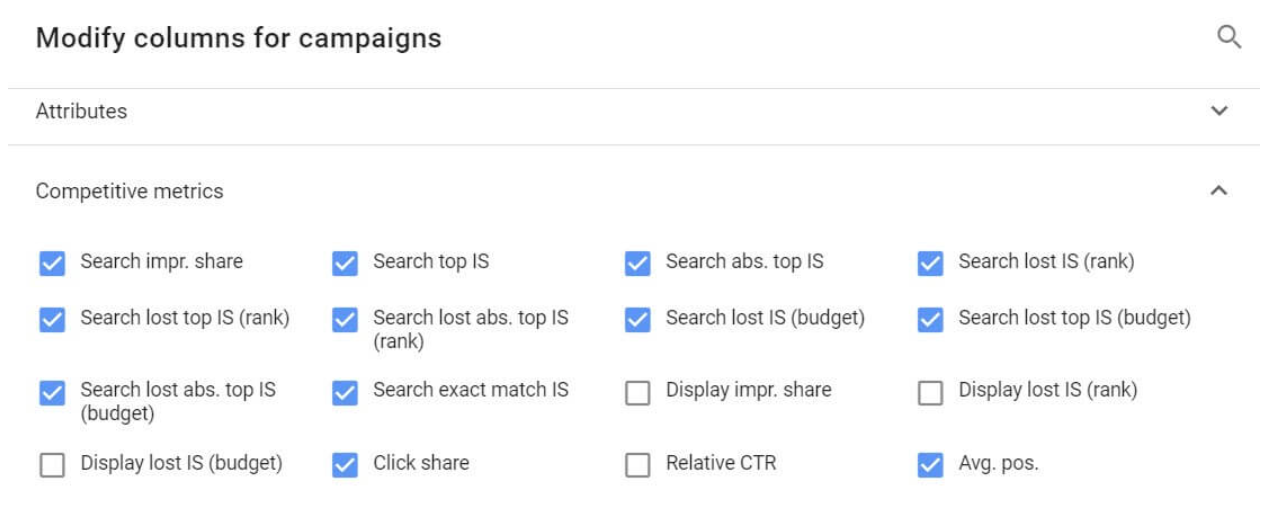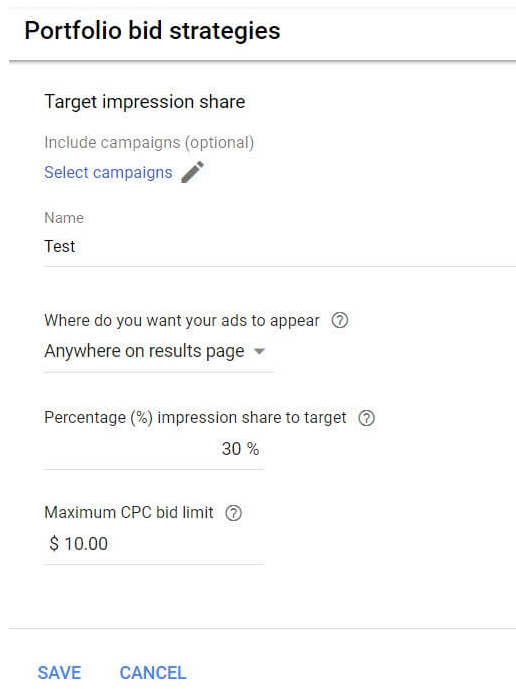Status quo
Achieving these goals is possible upon knowing where our ads appear on the search results page, comparing the different ad position performances, and optimising bids towards the most efficient.
Previously, Google had only one metric to help us with that – Average Position (or average Pos). A commonly misunderstood metric – where marketers interpret this as the actual position on SERPs, as opposed to the average.
However, understanding the paid search universe is never a simple feat.

Change Is Google's law.
In November 2018, Google admitted that digital marketers faced a lot of misconceptions about the Average Position metric. In the announcement, Google also provided additional comments and introduced new search ad position metrics. These metrics ideally should have clarified any confusion around the obscure SERP ad placements.
The announcement stated that Avg Pos was never meant to answer placement questions but rather – to show your ad performance compared to participating competitors in the auction. The 1st position usually meant that your ads won the auctions and overtook competitors. However, their exact appearance on the page was always a mystery…
Until November 2018 ….
…. With the release of the following 4 metrics – questions around the actual average position of our ad were made slightly transparent. However, it is not the average position in the auction.
- Impr. (Absolute Top) % – the percentage of our ad impressions shown as the first ad position above the organic search results.
- Impr. (Top) % – the percentage of our ad impressions shown anywhere above the organic search results.
- Search (Absolute Top) IS – the impressions we’ve received in the absolute top position divided by the estimated number of impressions we were eligible to receive in the top position.
- Search (Top) IS – the impressions we’ve received in the top position compared to the estimated number of impressions we were eligible to receive in the top position.

Google later introduced four new metrics related to Search Lost IS due to insufficient campaign budgets, low rank or bid amounts.
And lastly, Google updated smart bidding methods and let digital marketers apply automated bid adjustments optimised towards target impression share.

All those new metrics provided clarity to the average position situation. We could then determine that campaigns with the strong 1.5 Avg Pos metric may have had a very low impression share and almost non-existent abs. This opened doors to expand the audience reach by increasing bids, relocating, or increasing budgets.
But things changed …
It was easy to predict Google’s next move as when they give; they take something else away. Last month, after introducing one additional click share metric, this paid search giant “shocked” everyone with the announcement “Yep, guys – we realised that you don’t even need Avg Pos anymore with all these more detailed impression share metrics.”

A marketer’s despair at this update just might be due to either their reluctance for change or the fear towards loss of control of campaigns to Google. With new metrics, we can better target positioning anywhere on the page (at the top, at the absolute top or, really, “anywhere”), determine how often we want to appear there, and how much we can spend by setting max CPC.

We will have more control over the automated bid strategy in comparison with Target Keyword Position where we only set up the desired position and min and max CPC. And yet, let’s not see the world through rose-tinted glasses, this new Target IS bidding strategy is currently only available in the Google Ads interface and not in Search Ads 360 or other platforms. Plus, Target IS can’t currently be applied as an additional constraint to any other smart bidding methods, unlike Target Position. Hopefully, Google will update that soon enough.
But what if we want to know how we perform in the auctions in addition to the actual impression share? I guess in that case, we have to figure out how to calculate the Average Position once it’s gone or stop thinking of position as such a two-dimensional metric. Thankfully, today, we can use machine learning to reverse-engineer average Pos value from the new impression share metrics by using historical data for training. We definitely have some time to collect the data, there are rumours that Avg Pos will stay with us at least until September 2019. But do we really need it anyway?
Lean towards change, resistance is futile!
To summarise my thoughts on Avg Pos, we had an indirect view of where we stood in terms of competition. It was and still is a relative metric, and until recently, we did not know exactly what was it relative to.
The new metrics now give us not only that answer but also more insight into both the audience reach (Impression Share) and the share of voice (Search IS) that have direct (unlike Avg Pos) influence on the CPA through conversion rate and CPC as well as the number of conversions.
What we need to do now is find the right proportion of ingredients to reach target KPIs. In the future, it would be great to gather more data on how those new metrics correlate with our CPAs to find the optimal bidding strategy input. It’s great that we can use historical data for that as well; it sounds like an excellent task for a data analyst!
Written by
Luke Ashmore-Delaney




